An activation to memory differentiation trajectory of tumor-infiltrating lymphocytes informs metastatic melanoma outcomes
- PMID: 35537413
- PMCID: PMC9122099
- DOI: 10.1016/j.ccell.2022.04.005
An activation to memory differentiation trajectory of tumor-infiltrating lymphocytes informs metastatic melanoma outcomes
Abstract
There is a need for better classification and understanding of tumor-infiltrating lymphocytes (TILs). Here, we applied advanced functional genomics to interrogate 9,000 human tumors and multiple single-cell sequencing sets using benchmarked T cell states, comprehensive T cell differentiation trajectories, human and mouse vaccine responses, and other human TILs. Compared with other T cell states, enrichment of T memory/resident memory programs was observed across solid tumors. Trajectory analysis of single-cell melanoma CD8+ TILs also identified a high fraction of memory/resident memory-scoring TILs in anti-PD-1 responders, which expanded post therapy. In contrast, TILs scoring highly for early T cell activation, but not exhaustion, associated with non-response. Late/persistent, but not early activation signatures, prognosticate melanoma survival, and co-express with dendritic cell and IFN-γ response programs. These data identify an activation-like state associated to poor response and suggest successful memory conversion, above resuscitation of exhaustion, is an under-appreciated aspect of successful anti-tumoral immunity.
Keywords: ICB; T cell memory; TILs; immune checkpoint blockade; immune persistence; melanoma; survival; systems biology; tumor-infiltrating lymphocytes.
Copyright © 2022 Elsevier Inc. All rights reserved.
Conflict of interest statement
Declaration of interests N.A. is a scientific advisor and an equity holder in Shennon Biotechnologies, and is a consultant for Janssen, Immunitas, and Cellino Pharmaceuticals. B.I. is a consultant for Volastra Therapeutics Inc., Johnson & Johnson/Janssen, and received honoraria from AstraZeneca and Merck. None of these represent a conflict of interest pertaining to the presented work. O.E. is supported by Janssen, Johnson & Johnson, Astra-Zeneca, Volastra, and Eli Lilly research grants. He is scientific advisor to and equity holder in Freenome, Owkin, Volastra Therapeutics, Harmonic Discovery, and OneThree Bio, and a paid scientific advisor to Champions Oncology and Pionyr Therapeutics. O.T. is on the Scientific Advisory Board of Caris Life Sciences. V.H.E. is a consultant and shareholder for Agenus, Inc. A.R. is a founder and equity holder of Celsius Therapeutics, an equity holder in Immunitas Therapeutics and, until August 31, 2020, was a SAB member of Syros Pharmaceuticals, Neogene Therapeutics, Asimov, and Thermo Fisher Scientific. From August 1, 2020, A.R. is an employee of Genentech, a member of the Roche Group. A.R. is an inventor on multiple patents related to single-cell and spatial genomics filed by the Broad Institute.
Figures


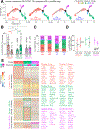
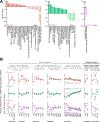
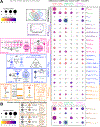
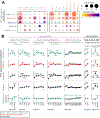
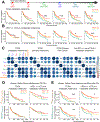
Comment in
-
TIL classified to memory state are correlated with response to immune checkpoint blockade.Cell Rep Med. 2022 Jun 21;3(6):100669. doi: 10.1016/j.xcrm.2022.100669. Cell Rep Med. 2022. PMID: 35732152 Free PMC article.
References
Publication types
MeSH terms
Substances
Grants and funding
LinkOut - more resources
Full Text Sources
Other Literature Sources
Medical
Research Materials

